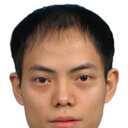Laser confocal endomicroscopy as a novel technique for fluorescence diagnostic imaging of the oral cavity.
Schlüsselwörter
Abstrakt
Malignancies of the oral cavity are conventionally diagnosed by white light endoscopy, biopsy, and histopathology. However, it is often difficult to distinguish between benign and premalignant or early lesions. A laser confocal endomicroscope (LCE) offers noninvasive, in vivo surface and subsurface fluorescence imaging of tissue. We investigate the use of an LCE with a rigid probe for diagnostic imaging of the oral cavity. Fluorescein and 5-aminolevulinic acid (ALA) were used to carry out fluorescence imaging in vivo and on resected tissue samples of the oral cavity. In human subjects, ALA-induced protoporphyrin IX (PpIX) fluorescence images from the normal tongue were compared to images obtained from patients with squamous cell carcinoma (SCC) of the tongue. Using rat models, images from normal rat tongues were compared to those from carcinogen-induced models of SCC. Good structural images of the oral cavity were obtained using ALA and fluorescein, and morphological differences between normal and lesion tissue can be distinguished. The use of a pharmaceutical-grade solvent Pharmasolve enhanced the subsurface depth from which images can be obtained. Our initial results show that laser confocal fluorescence endomicroscopy has potential as a noninvasive optical imaging method for the diagnosis of oral cavity malignancies.


